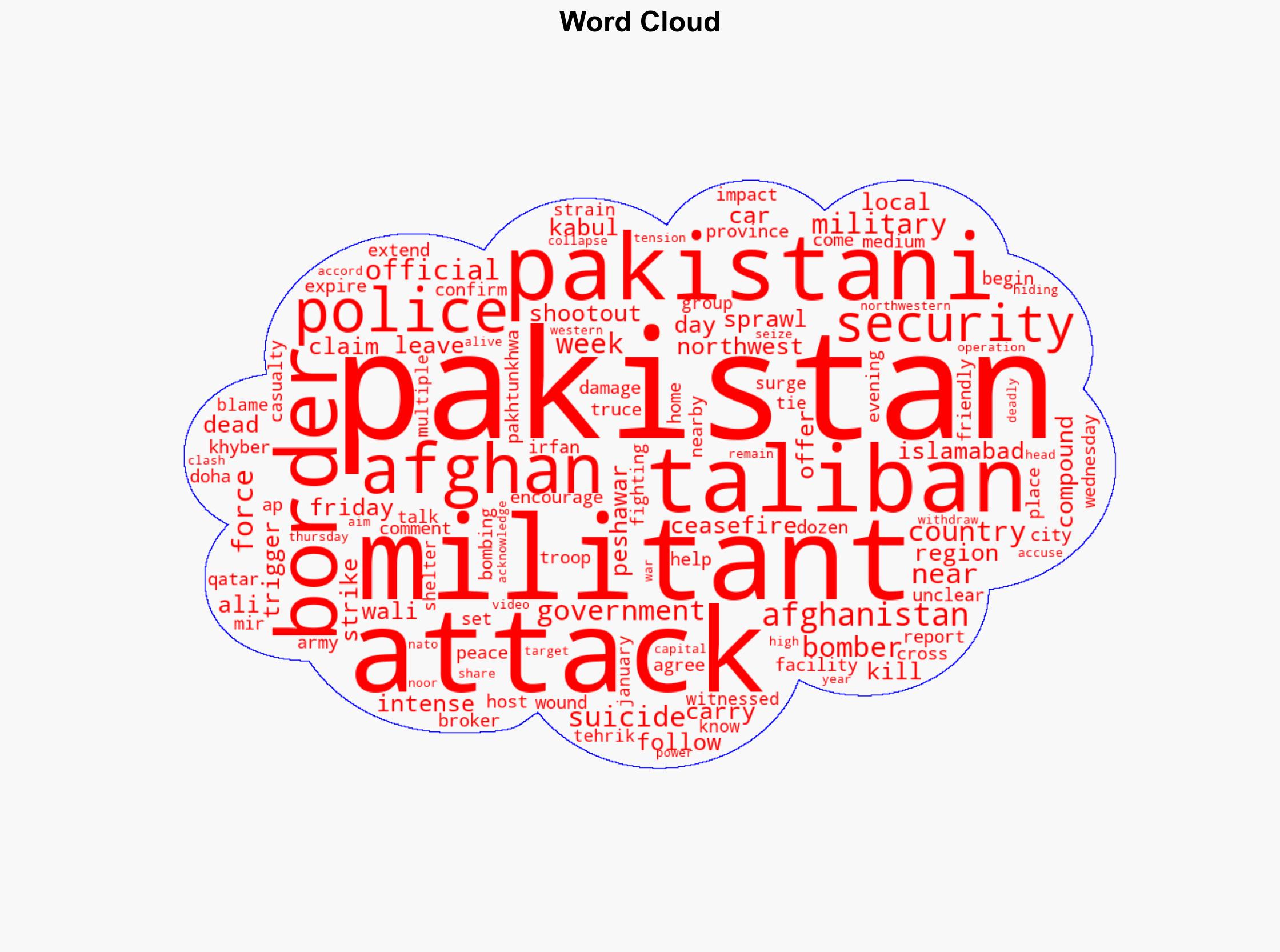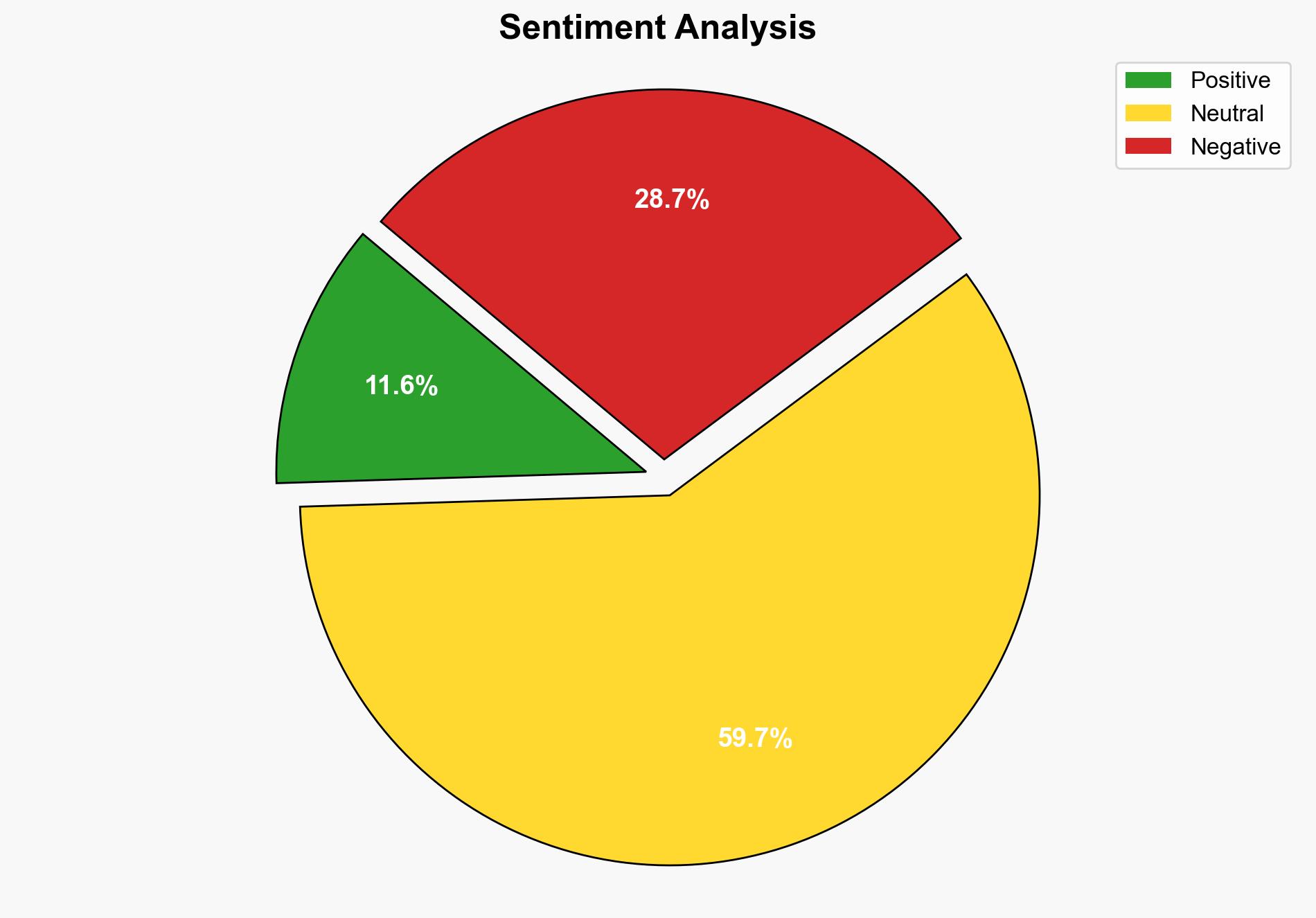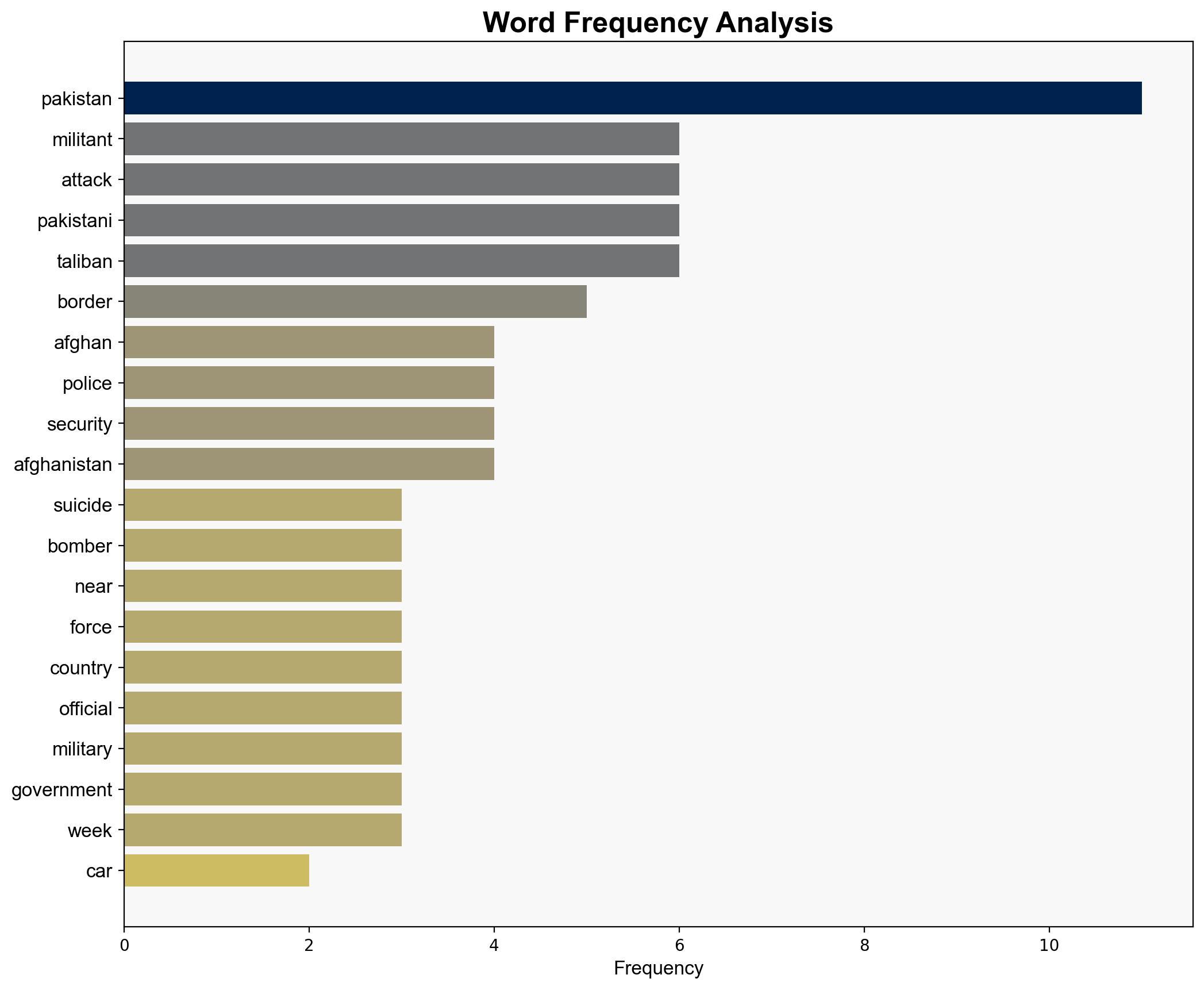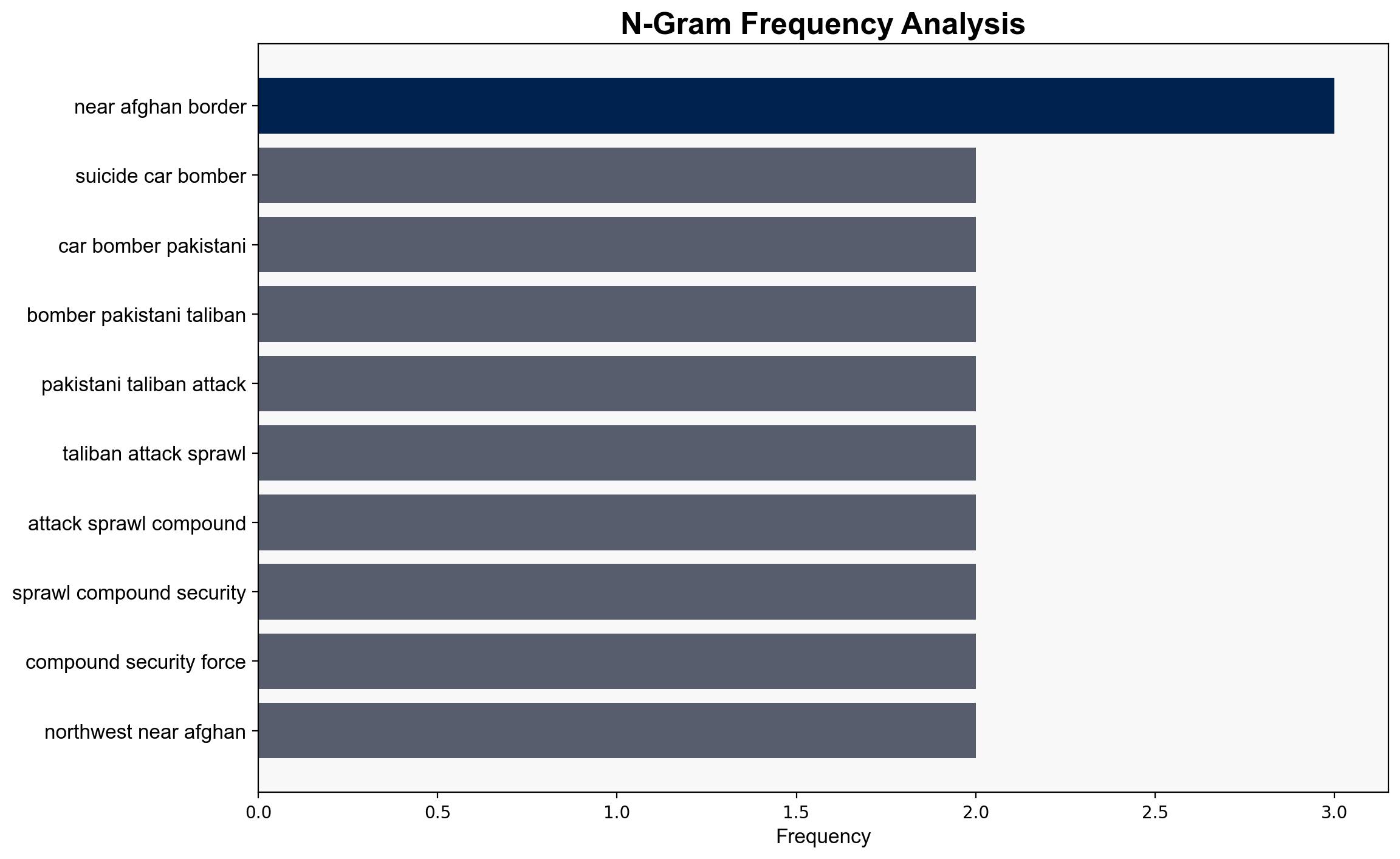A suicide bomber and militants attack a Pakistani army facility near Afghan border – ABC News
Published on: 2025-10-17
Intelligence Report: A suicide bomber and militants attack a Pakistani army facility near Afghan border – ABC News
1. BLUF (Bottom Line Up Front)
The most supported hypothesis is that the attack on the Pakistani army facility is a strategic maneuver by the Pakistani Taliban (Tehrik-i-Taliban Pakistan, TTP) to destabilize the region and undermine the ceasefire efforts between Pakistan and Afghanistan. Confidence in this hypothesis is moderate due to the complex regional dynamics and recent ceasefire developments. Recommended actions include enhancing intelligence-sharing mechanisms with regional allies and preparing for potential retaliatory actions by the TTP.
2. Competing Hypotheses
1. **Hypothesis A**: The attack is a direct response by the TTP to recent Pakistani military operations targeting their leadership and infrastructure, aiming to assert their presence and capabilities.
2. **Hypothesis B**: The attack is part of a broader strategy by external actors to disrupt the fragile ceasefire between Pakistan and Afghanistan, potentially involving elements within Afghanistan who oppose the current peace efforts.
Using the Analysis of Competing Hypotheses (ACH) 2.0, Hypothesis A is better supported due to the timing of the attack following recent military operations and the TTP’s historical pattern of retaliatory strikes. Hypothesis B lacks direct evidence linking external actors to the attack.
3. Key Assumptions and Red Flags
– **Assumptions**: It is assumed that the TTP has the operational capability to conduct such attacks independently. Another assumption is that the ceasefire is fragile and susceptible to disruption by militant actions.
– **Red Flags**: The lack of clarity on troop casualties and the extent of damage raises questions about the completeness of the reporting. Additionally, the potential involvement of external actors remains a blind spot due to limited intelligence.
4. Implications and Strategic Risks
The attack could escalate tensions along the Pakistan-Afghanistan border, potentially leading to a breakdown of the ceasefire. This scenario could result in increased militant activities, destabilizing the region further. Economically, prolonged instability may deter foreign investment and aid, while geopolitically, it could strain Pakistan’s relations with Afghanistan and other neighboring countries.
5. Recommendations and Outlook
- Enhance intelligence-sharing with Afghanistan and regional allies to monitor TTP activities and prevent future attacks.
- Strengthen border security and surveillance to detect and neutralize threats early.
- Scenario-based projections:
- Best: Successful extension of the ceasefire with reduced militant activities.
- Worst: Breakdown of the ceasefire leading to increased cross-border attacks and regional instability.
- Most Likely: Continued sporadic attacks by the TTP with intermittent ceasefire negotiations.
6. Key Individuals and Entities
– Noor Wali, head of the Pakistani Taliban, reportedly targeted in recent military operations.
7. Thematic Tags
national security threats, counter-terrorism, regional focus




